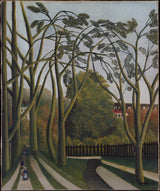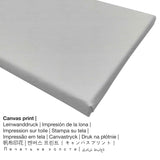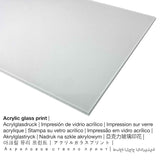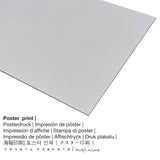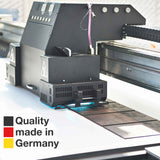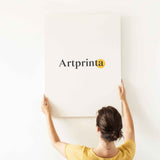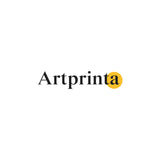Henri Rousseau, 1908 - Ụlọ akụ nke Bièvre dị nso na Bicêtre - ọmarịcha nka.
Ụtụ gụnyere. Mbupu gbakọrọ na ndenye ọpụpụ.
Nke a na narị afọ nke 20 na-ese site na nwoke French artist Henri Rousseau. The version of the painting was painted with the size: 21 1/2 x 18 inch (54,6 x 45,7 cm). Mmanụ na kwaaji was used by the French painter as the medium of the artwork. Furthermore, this work of art is part of the digital collection of Museumlọ ihe ngosi nka nke Obodo. Site n'ikike nke The Metropolitan Museum of Art, New York, Gift of Marshall Field, 1939 (ọha na eze). : Gift of Marshall Field, 1939. Ọzọkwa, itinye n'usoro mmepụta dijitalụ na-abanye Eserese usoro na nwere akụkụ ruru nke 1: 1.2, nke pụtara na ogologo bụ 20% mkpụmkpụ karịa obosara. Henri Rousseau was a male painter, whose artistic style can mainly be assigned to Naive Art Primitivism. The artist was born in 1844 na Laval, Pays de la Loire, France wee nwụọ mgbe ọ dị afọ 66 na 1910.
Nhọrọ ihe onwunwe
Maka mbipụta nka ọ bụla anyị na-enye nha & ihe dị iche iche. Ị nwere ike ịhọrọ n'ime nhọrọ nhazi ngwaahịa ndị a:
- Mbipụta nke aluminom: Aluminium Dibond prints are metal prints with an impressive effect of depth, which makes a contemporary impression throuch a non-reflective surface structure. The Direct Print on Aluminum Dibond is your perfect introduction to prints manufactured on aluminum. For your Direct Print On Aluminum Dibond, we print your favorite work of art on the surface of the aluminum. The colors are luminous and bright in the highest definition, fine details are crisp. The direct print on Aluminum Dibond is one of the most demanded entry-level products and is a truly modern way to showcase art, since it puts 100% of the viewer’s attention on the artwork.
- Mbipụta kwaaji: The UV printed canvas material stretched on a wooden stretcher frame. Your canvas print of your favorite artwork will allow you to transform your new art print into a large size artpiece as you know from art galleries. Canvas Prints have the advantage of being relatively low in weight, which implies that it is easy and straightforward to hang up the Canvas print without the use of any wall-mounts. A canvas print is suitable for all kinds of walls.
- Mbipụta enyo acrylic: The print on acrylic glass, which is sometimes labelled as a UV print on plexiglass, will convert the original artwork into wall décor.
- Mpempe akwụkwọ ederede (akwa akwa akwa): Our poster is a UV printed canvas with a slightly rough surface structure. It is optimally designed for framing the fine art print in a custom frame. Please note, that depending on the size of the canvas poster print we add a white margin 2 - 6cm around the print in order to facilitate the framing with your custom frame.
Nkwupụta iwu: We try all that we can in order to depict our products as exact as possible and to demonstrate them visually. Still, the tone of the printing material and the printing may vary slightly from the image on your screen. Depending on the settings of your screen and the quality of the surface, colors may not be printed as exactly as the digital version depicted here. Since the fine art prints are printed and processed manually, there may as well be minor deviations in the size and exact position of the motif.
Nkọwa edemede
| Nkewa edemede: | nka nka |
| Usoro mmeputakwa: | dijitalụ mmeputakwa |
| Produzọ mmepụta: | UV kpọmkwem obibi |
| Nlụpụta: | Germany |
| Ụdị ngwaahịa: | na mmepụta ihe |
| Eji ngwaahịa emebere: | ihe ndozi mgbidi, foto mgbidi |
| Nhazi nka nka: | nhazi ihe osise |
| Oke akụkụ: | ( Ogologo: obosara) 1: 1.2 |
| Nkọwa nha onyonyo: | ogologo bụ 20% mkpụmkpụ karịa obosara |
| Nhọrọ akụrụngwa: | akwụkwọ mmado (akwụkwọ kwaaji), mbipụta enyo acrylic (nke nwere ezigbo mkpuchi iko), mbipụta ọla (aluminium dibond), mbipụta kwaaji |
| Ọdịiche dị n'okirikiri akwa akwa akwa (akwa akwa): | 50x60cm - 20x24", 100x120cm - 39x47", 150x180cm - 59x71" |
| Mbipụta iko acrylic (nwere ezigbo mkpuchi iko) dị iche iche: | 50x60cm - 20x24", 100x120cm - 39x47", 150x180cm - 59x71" |
| Ụdị akwụkwọ mmado (akwụkwọ kwaaji) dị iche iche: | 50x60cm - 20x24", 100x120cm - 39x47" |
| Ụdị nha ebipụta aluminom: | 50x60cm - 20x24", 100x120cm - 39x47" |
| Nhazi mbipụta nka: | oyiri nka na-enweghị isi |
Ozi ndabere na nka nka izizi
| Aha nke ihe nka: | "The Banks of the Bièvre near Bicêtre" |
| Nhazi nka: | sere |
| Okwu nche anwụ: | nkà nke oge a |
| Century: | 20th narị afọ |
| Afọ okike: | 1908 |
| Afọ nka: | 110 afọ |
| Ihe osise izizi: | mmanụ na kwaaji |
| Akụkụ izizi: | 21 1/2 x 18 inch (54,6 x 45,7 cm) |
| Ụlọ ihe ngosi nka: | Museumlọ ihe ngosi nka nke Obodo |
| Ebe ebe ngosi nka: | New York City, New York, Njikota Obodo Amerika |
| Weebụsaịtị nke ihe ngosi nka: | www.metmuseum.org |
| Ụdị ikike nka: | ngalaba ọha |
| Site n'aka: | The Metropolitan Museum of Art, New York, Gift of Marshall Field, 1939 |
| Ebe E Si Nweta: | Gift of Marshall Field, 1939 |
Ozi izugbe na onye na-ese ihe
| Ihe nkiri: | Henri Rousseau |
| Aha ndi ozo: | Henri Rousseau, Customs Officer, Rousseau, Le Douanier, Rousseau Douanier, h. rousseau, Douanier, Rousseau Henri Julien, Douanier Rousseau, Douanier Rousseau, Rousseau Henri Julien Felix, rousseau h., Rousseau Henri-Julien-Félix, Rousseau Henri, Henri Julien Félix Rousseau, Rousseau Le Douanier, Rousseau Henry Julien Felix, רוסו אנרי |
| okike nke onye nka: | nwoke |
| Nationality: | French |
| Ọrụ nke onye na-ese ihe: | onye na-ese ihe |
| Obodo obibi: | France |
| Nhazi nke onye nka: | omenkà nke oge a |
| Ụdị nke onye na-ese ihe: | Naive Art Primitivism |
| Nwụrụ na afọ nke: | 66 afọ |
| Afọ ọmụmụ: | 1844 |
| Amụrụ na (ebe): | Laval, Pays de la Loire, France |
| Nwụrụ n'afọ: | 1910 |
| Nwụrụ na (ebe): | Paris, Ile-de-France, France |
Enwere ikike nwebiisinka ©, www.artprinta.com (Artprinta)
Nkọwa izugbe dị ka e si na The Metropolitan Museum of Art (© - Ụlọ ihe ngosi nka nke obodo ukwu - Museumlọ ihe ngosi nka nke Obodo)
Rousseau identified the subject of this painting in a handwritten note, affixed to its stretcher, dated 1909, the year he consigned it for sale to the dealer Ambroise Vollard. The scene depicts the landscape around Bicêtre, a working-class community on the southern edge of Paris near the Bièvre river (now buried underground as it courses through the city). In Rousseau’s day, the waterway was heavily polluted, but certain spots still offered picturesque views, as suggested by the figures in peasant dress on the tree-lined path at left, and the glimpse of the seventeenth-century aqueduc d’Arcueil in the background.

